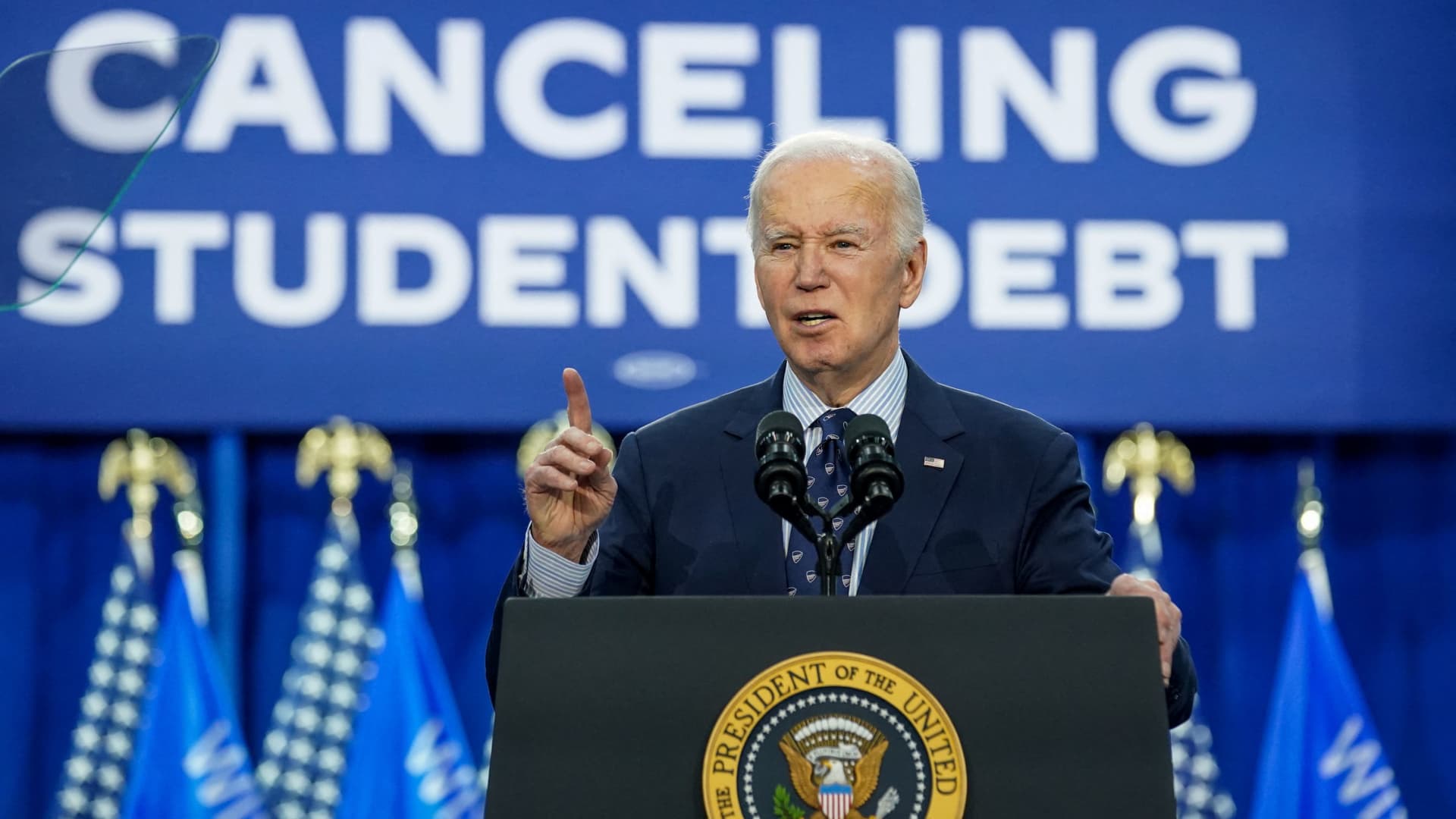Products You May Like
Cody Gude was counting the seconds until July when his monthly student loan payment was scheduled to drop to $100 from $200.
The lower payment meant that he would no longer need to deliver groceries on Instacart in his spare time, on top of his work as a social media consultant.
“I could breathe,” the 35-year-old Tampa, Florida, resident said.
But then he saw headlines on Monday that major parts of the Saving on a Valuable Education, or SAVE, plan were on pause. Two federal judges in Kansas and Missouri temporarily halted the Biden administration’s new repayment plan until they rule on the cases.
The U.S. Department of Justice is expected to appeal the preliminary injunctions, but for now, millions of student loan borrowers are disappointed and angry that they won’t see the relief they expected in just a matter of days.
More from Personal Finance:
Why inflation is still upending retirement plans
Older voters want candidates who will protect Social Security
Workers in certain industries tend to have higher 401(k) balances
There’s a great deal of confusion as well.
Gude’s student loan servicer, Nelnet, already updated his monthly bill to reflect the lower amount. (Under SAVE, many borrowers pay just 5% of their discretionary income toward their debt each month instead of the previous 10% requirement, and millions of borrowers have a $0 monthly payment.)
“So am I actually going to have that payment, or are they going to send me a letter saying, ‘Ha! We’re just kidding,'” Gude said. “Everyone is in the dark.”
Here’s what we know so far.
Why is the SAVE plan causing drama?
President Joe Biden last summer rolled out the SAVE plan, describing it as “the most affordable student loan plan ever.” So far, around 8 million borrowers have signed up for the new income-driven repayment plan, according to the White House.
Under IDR plans, borrowers pay a share of their discretionary income each month and receive forgiveness after a set period, typically 20 years or 25 years. SAVE replaced the U.S. Department of Education’s former REPAYE option, or Revised Pay As You Earn plan.
The SAVE plan has the most generous terms to date, which has led to the current controversy.
Instead of paying 10% of their discretionary income a month toward their undergraduate student debt under REPAYE, borrowers need to pay just 5%.
Those who earn less than $15 an hour have a $0 monthly bill, and borrowers with smaller balances are entitled to loan forgiveness in as little as 10 years.
“The SAVE plan is very generous to borrowers, almost like a grant after the fact,” said higher education expert Mark Kantrowitz.
Due to the timeline of regulatory changes, the SAVE plan wasn’t scheduled to fully take effect until July 1, although some features were already available to borrowers.
By mid-April, 360,000 borrowers received $4.8 billion in debt relief under the plan, the Education Department reported.
What did the judges decide?
The federal judges responded to lawsuits against the SAVE plan filed earlier this year by Republican-led states, including Florida, Arkansas and Missouri.
The states argued that the Biden administration was overstepping its authority with SAVE, and essentially trying to find a roundabout way to forgive student debt after the Supreme Court blocked its sweeping plan last year.
The federal judge in Kansas, Daniel Crabtree, declined to unwind features of the SAVE plan already in effect “because plaintiffs have failed to demonstrate those provisions caused irreparable harm” since they’d brought the lawsuit “long after defendants already had implemented those aspects of the SAVE Plan.”
However, Crabtree agreed to halt the Education Department from implementing the SAVE provision that dramatically lowers borrowers’ monthly payments come July. Crabtree pointed out that the REPAYE plan, which SAVE replaced, “cost an estimated $15.4 billion.” The SAVE plan, meanwhile, is expected to cost $475 billion over the next decade.
“This difference — $475 billion versus $15.4 billion — expands agency authority to such an extent that it alters it,” Crabtree wrote. “So, the court concludes that the SAVE Plan represents ‘an enormous and transformative expansion in regulatory authority without clear congressional authorization.'”
Meanwhile in Missouri, Judge John Ross prevented the Biden administration from forgiving any more student debt under the SAVE program until he reaches a decision on the case. Ross agreed with the states that the relief plan would likely reduce the fees the government pays to the Missouri Higher Education Loan Authority, or Mohela, for servicing its federal student loans.
So, the key question is: How long can this legal case take?
“Months, I suspect, past [the] election,” said Scott Buchanan, executive director of the Student Loan Servicing Alliance, a trade group for federal student loan servicers.
Buchanan assumes the cases will eventually reach the Supreme Court, “then they themselves wouldn’t even take it up until the October term, for a ruling much later.”
In the meantime, what do borrowers do?
Borrowers can stay enrolled in the SAVE plan for now, and many are still benefiting from lower bills already. (The judges didn’t pause the provision shielding a higher share of borrowers’ income from their payment calculation.)
Even if your servicer updated your monthly bill to what it was going to be before the preliminary injunctions, your required payment should soon revert back to its June level, experts say.
“The court’s ruling is not retroactive,” Kantrowitz added. “So, borrowers do not have to worry about the courts clawing back the forgiveness they have already received.”
Correction: Judge Ross agreed with the states that the relief plan would likely reduce the fees the government pays to the Missouri Higher Education Loan Authority, or Mohela, for servicing its federal student loans. An earlier version misstated the name of the agency.
